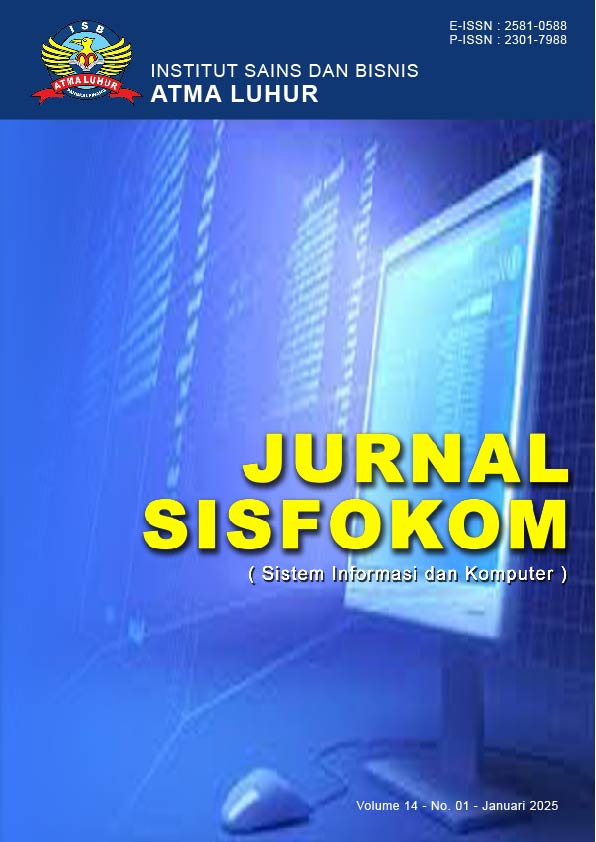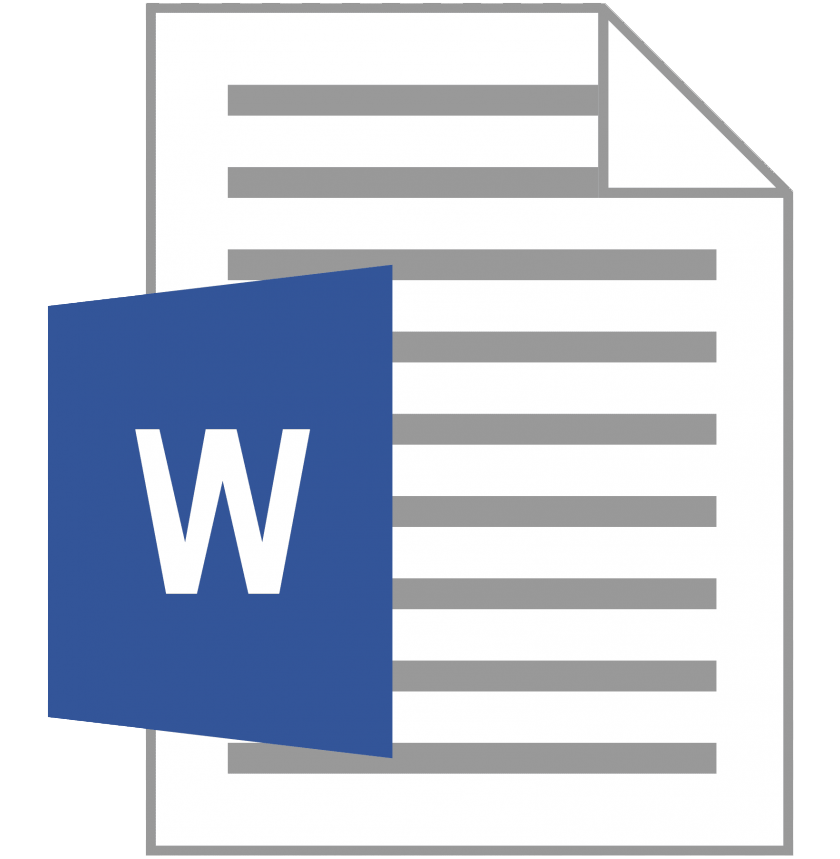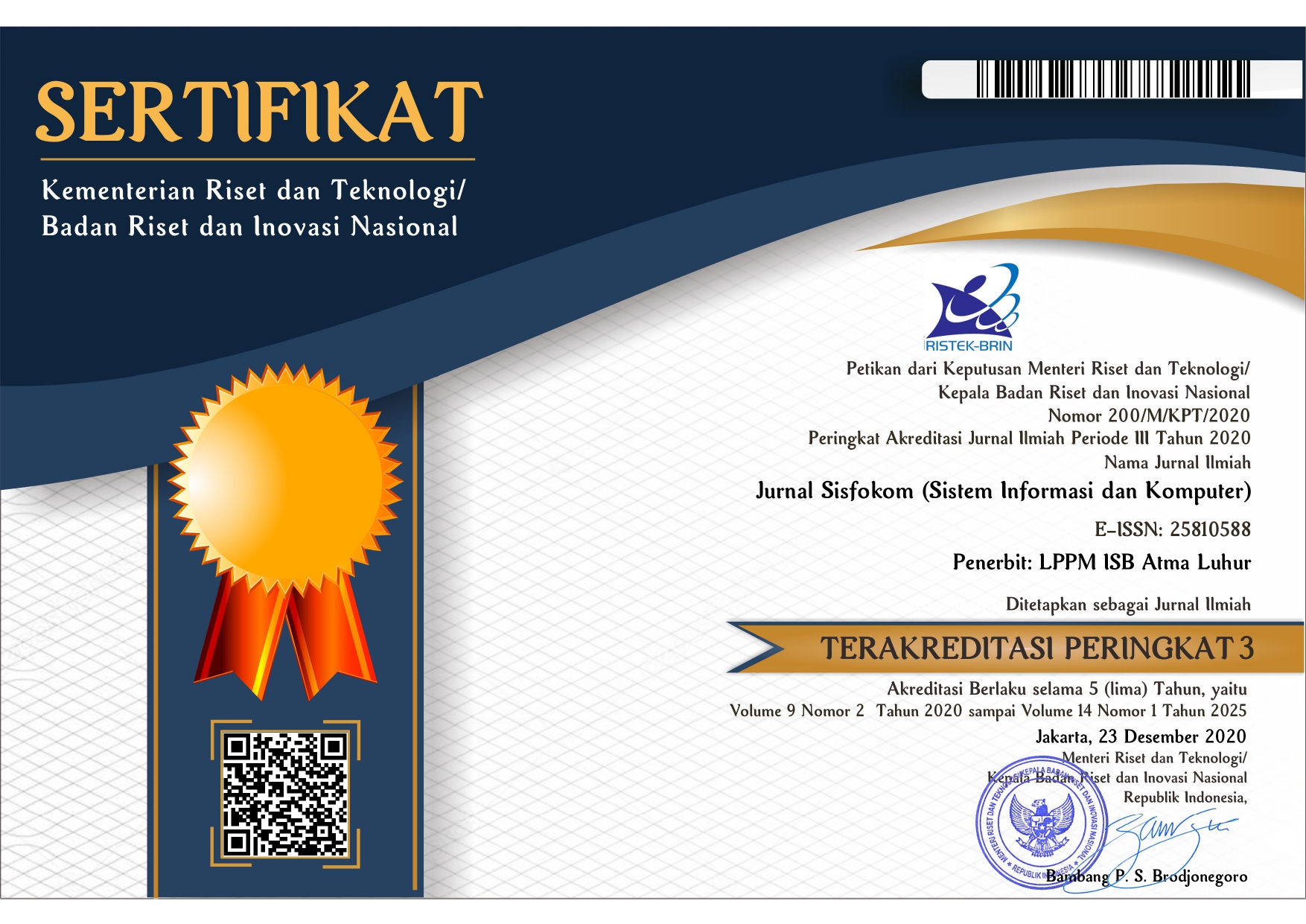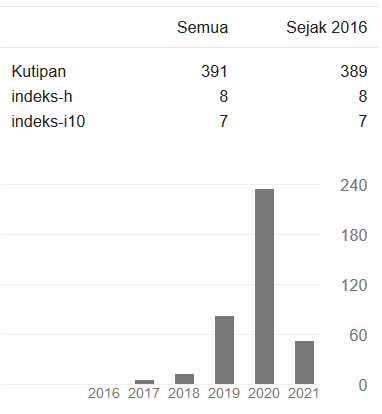Weather Monitoring and Classification Tools Using Fuzzy Logic Method Based on Internet of Things for Agriculture
DOI:
https://doi.org/10.32736/sisfokom.v14i1.2338Keywords:
Fuzzy Logic, Internet of Things, Precision Agriculture, Solar Energy, Weather MonitoringAbstract
Agriculture is a crucial sector that faces significant challenges due to climate change, such as altered rainfall patterns, increased temperatures, and extreme weather, which threaten productivity. This research aims to design and develop a weather monitoring and classification tool utilizing the Fuzzy Logic method based on the Internet of Things (IoT). The system integrates sensors for temperature, humidity, air pressure, wind speed, and rainfall, processing the data through Fuzzy Logic to classify weather into sunny, cloudy, light rain, moderate rain, and heavy rain. The results are accessible in real-time via an LCD screen and the Blynk application. Achieving 100% accuracy in monitored conditions, the system operates continuously for 24 hours, powered by solar energy. Unlike traditional systems, this tool provides innovative solutions to weather-related agricultural challenges, enabling farmers to make informed decisions and mitigate losses due to extreme weather. This research contributes to advancing IoT applications in precision agriculture, providing a reliable, sustainable, and scalable solution to weather monitoring.References
M. N. O. Sadiku, T. J. Ashaolu, A. Ajayi-Majebi, and S. M. Musa, “Internet of Things in Agriculture: A Primer,” International Journal Of Scientific Advances, vol. 2, no. 2, pp. 215–220, 2021, doi: 10.51542/ijscia.v2i2.24.
G. Vitali, M. Francia, M. Golfarelli, and M. Canavari, “Crop Management with the IoT: An Interdisciplinary Survey,” Agronomy, vol. 11, no. 1, pp. 1–18, 2021, doi: 10.3390/agronomy11010181.
D. M. Quan and H. V. Tr?n Th?, “Potential and Trends of IoT Application in Agriculture in Vietnam,” Journal of Social Science, vol. 4, no. 3, pp. 666–676, 2023, doi: 10.46799/jss.v4i3.256.
N. V. G. Deekshithulu, J. Mali, V. V. Krishna, and D. Surekha, “Design, Development and Implementation of Real Time Canal and Weather Monitoring Devices,” Journal of Experimental Agriculture International, vol. 43, no. 11, pp. 1–13, 2021, doi: 10.9734/jeai/2021/v43i1130752.
F. N. Ibraheem, S. N. Abdulrazzaq, I. Fathi, and Q. Ali, “High-Resolution and Secure IoT-Based Weather Station Design,” International Journal of Safety and Security Engineering, vol. 14, no. 1, pp. 249–258, 2024, doi: 10.18280/ijsse.140125.
M. Pawar, V. More, P. Jalke, and Dr. A. R. Nichal, “IoT Based Smart Agriculture Monitoring, Weather Control and Irrigation System,” International Journal of Research Publication and Reviews, vol. 03, no. 12, pp. 1688–1694, 2022, doi: 10.55248/gengpi.2022.31251.
N. Setyanugraha, S. Al Aziz, I. W. Harmoko, and F. Fianti, “Study of a Weather Prediction System Based on Fuzzy Logic Using Mamdani and Sugeno Methods,” Physics Communication, vol. 6, no. 2, pp. 61–70, 2022, doi: 10.15294/physcomm.v6i2.39703.
Y. Wang and Y. Yang, “A Novel Secure and Energy-efficient Routing Method for the Agricultural Internet of Things Using Whale Optimization Algorithm,” Journal of Cyber Security and Mobility, vol. 13, no. 4, pp. 725–750, 2024, doi: 10.13052/jcsm2245-1439.1347.
P. Vaishnavi et al., “An Efficient Agricultural Data Analysis Based On IOT,” MATEC Web of Conferences, vol. 392, p. 01098, 2024, doi: 10.1051/matecconf/202439201098.
P. Zhang, X. Chen, S. Li, C. Zhang, and Y. Hu, “Development of the Internet of Smart Orchard Things Based on Multi-Sensors and LoRa Technology,” Intelligent and Converged Networks, vol. 4, no. 4, pp. 342–354, 2023, doi: 10.23919/ICN.2023.0028.
Downloads
Published
Issue
Section
License

This work is licensed under a Creative Commons Attribution 4.0 International License.
The copyright of the article that accepted for publication shall be assigned to Jurnal Sisfokom (Sistem Informasi dan Komputer) and LPPM ISB Atma Luhur as the publisher of the journal. Copyright includes the right to reproduce and deliver the article in all form and media, including reprints, photographs, microfilms, and any other similar reproductions, as well as translations.
Jurnal Sisfokom (Sistem Informasi dan Komputer), LPPM ISB Atma Luhur, and the Editors make every effort to ensure that no wrong or misleading data, opinions or statements be published in the journal. In any way, the contents of the articles and advertisements published in Jurnal Sisfokom (Sistem Informasi dan Komputer) are the sole and exclusive responsibility of their respective authors.
Jurnal Sisfokom (Sistem Informasi dan Komputer) has full publishing rights to the published articles. Authors are allowed to distribute articles that have been published by sharing the link or DOI of the article. Authors are allowed to use their articles for legal purposes deemed necessary without the written permission of the journal with the initial publication notification from the Jurnal Sisfokom (Sistem Informasi dan Komputer).
The Copyright Transfer Form can be downloaded [Copyright Transfer Form Jurnal Sisfokom (Sistem Informasi dan Komputer).
This agreement is to be signed by at least one of the authors who have obtained the assent of the co-author(s). After submission of this agreement signed by the corresponding author, changes of authorship or in the order of the authors listed will not be accepted. The copyright form should be signed originally, and send it to the Editorial in the form of scanned document to sisfokom@atmaluhur.ac.id.







